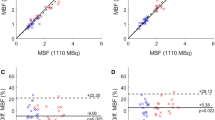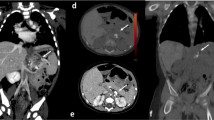Abstract
Purpose
Myocardial perfusion imaging contributes >20 % of the average medical radiation exposure to the population in the USA. Imaging protocols able to achieve a radiation exposure ≤9 mSv in 50 % of the studies by 2014 have been recommended. The aim of this study was to analyse the temporal evolution of administered activities in patients scheduled for dual-day 99mTc tracer gated single photon emission computed tomography (SPECT) and to compare different dose administration protocols in terms of patients’ effective dose.
Methods
Patients evaluated from 1 July 2002 to 31 January 2012 were allocated according to the protocol adopted: group 1: fixed activity according to diagnostic reference level: 740 MBq up to 80 kg (adapted for weight <60 kg); 900 MBq 80–100 kg, 1,110 MBq >100 kg, standard filtered back-projection (FBP) reconstruction; group 2: weight-adjusted activity: 8 MBq/kg up to 1,110 MBq, standard FBP reconstruction; and group 3: 4 MBq/kg, UltraSPECT wide beam reconstruction (WBR) reconstruction. A dual-head Anger camera (GE Helix) was used.
Results
A total of 9,060 patients were allocated to different groups: 4,751 in group 1, 2,844 in group 2 and 1,465 in group 3. The stress + rest administered activity was 1,617 ± 180 in group 1, 1,136 ± 260 in group 2 and 682 ± 164 MBq in group 3 (all p < 0.001). Patients’ effective dose was 13.7 ± 3 in group 1, 9.5 ± 2.8 in group 2 and 5.7 ± 1.6 mSv in group 3 (all p < 0.001). The 50th percentile was 12.6 in group 1, 9.1 in group 2 and 5.3 mSv in group 3. The effective dose received by the dedicated cardiologists was 2.1, 1.5 and 1.0 μSv/exam in group 1, group 2 and group 3 periods, respectively (all p < 0.001).
Conclusion
A significant reduction over time in the administered activity for gated SPECT was achieved; accordingly, a significant reduction in patients’ exposure was obtained. A simple weight-adjusted strategy with 8 MBq/kg immediately fulfils the recommendations to limit exposure. In selected group 3 patients, a stress-only strategy allows for studies with <3 mSv exposure. Thus, at least the adoption of a new reconstruction algorithm is strongly encouraged, and suggested tracer activities for cardiac gated SPECT are to be revised.





Similar content being viewed by others
References
Lucas FL, DeLorenzo MA, Siewers AE, Wennberg DE. Temporal trends in the utilization of diagnostic testing and treatments for cardiovascular disease in the United States, 1993–2001. Circulation 2006;113:374–9.
Einstein AJ, Moser KW, Thompson RC, Cerqueira MD, Henzlova MJ. Radiation dose to patients from cardiac diagnostic imaging. Circulation 2007;116:1290–305.
Gerber TC, Carr JJ, Arai AE, Dixon RL, Ferrari VA, Gomes AS, et al. Ionizing radiation in cardiac imaging: a science advisory from the American Heart Association Committee on Cardiac Imaging of the Council on Clinical Cardiology and Committee on Cardiovascular Imaging and Intervention of the Council on Cardiovascular Radiology and Intervention. Circulation 2009;119:1056–65.
Fazel R, Krumholz HM, Wang Y, Ross JS, Chen J, Ting HT, et al. Exposure to low-dose ionizing radiation from medical imaging procedures. N Engl J Med 2009;361:849–57.
Einstein AJ. Effects of radiation exposure from cardiac imaging: how good are the data? J Am Coll Cardiol 2012;59:553–65.
Committee to Assess Health Risks from Exposure to Low Levels of Ionizing Radiation, National Research Council. Health risks from exposure to low levels of ionizing radiation: BEIR VII phase 2. Washington, DC: National Academies Press; 2006.
Laskey WK, Feinendegen LE, Neumann RD, Dilsizian V. Low-level ionizing radiation from noninvasive cardiac imaging: can we extrapolate estimated risks from epidemiologic data to the clinical setting? JACC Cardiovasc Imaging 2010;3:517–24.
Cerqueira MD, Allman KC, Ficaro EP, Hansen CL, Nichols KJ, Thompson RC, et al. Recommendations for reducing radiation exposure in myocardial perfusion imaging. J Nucl Cardiol 2010;17:709–18.
Douglas PS, Carr JJ, Cerqueira MD, Cummings JE, Gerber TC, Mukherjee D, et al. Developing an action plan for patient radiation safety in adult cardiovascular medicine. Proceedings from the Duke University Clinical Research Institute/American College of Cardiology Foundation/American Heart Association Think Tank Held on February 28, 2011. J Nucl Cardiol 2012;19:534–50.
Slomka P, Dey D, Duvall WL, Henzlova MJ, Berman DS, Germano G. Advances in nuclear cardiac instrumentation with a view towards reduced radiation exposure. Curr Cardiol Rep 2012;14:208–16.
DePuey EG, Gadiraju R, Clark J, Thompson L, Anstett F, Shwartz SC. Ordered subset expectation maximization and wide beam reconstruction “half-time” gated myocardial perfusion SPECT functional imaging: a comparison to “full-time” filtered backprojection. J Nucl Cardiol 2008;15:547–63.
DePuey EG, Bommireddipalli S, Clark J, Thompson L, Srour Y. Wide beam reconstruction “quarter-time” gated myocardial perfusion SPECT functional imaging: a comparison to “full-time” ordered subset expectation maximum. J Nucl Cardiol 2009;16:736–52.
Marcassa C, Campini R, Zoccarato O, Calza P. Wide beam reconstruction for half-dose or half-time cardiac gated-SPECT acquisitions: optimization of resources and reduction in radiation exposure. Eur J Nucl Med Mol Imaging 2011;38:499–507.
Zafrir N, Solodky A, Ben-Shlomo A, Mats I, Nevzorov R, Battler A, et al. Feasibility of myocardial perfusion imaging with half the radiation dose using ordered-subset expectation maximization with resolution recovery software. J Nucl Cardiol 2012;19:704–12.
ICRP Publication 106. Radiation dose to patients from radiopharmaceuticals. Addendum 3 to ICRP Publication 53. Ann ICRP 2008;38:159–62.
Konijnenberg M. Physics and radiation exposure. In: Bucerius J, Ahmadzadehfar H, Biersack H, editors. 99mTc-Sestamibi. Berlin: Springer; 2012. doi:10.1007/978-3-642-04233-1_2.
The 2007 Recommendations of the International Commission on Radiological Protection. ICRP Publication 103. Ann ICRP 2007;37:1–332.
Duvall W, Croft L, Godiwala T, Ginsberg E, George T, Henzlova M. Reduced isotope dose with rapid SPECT MPI imaging: initial experience with a CZT SPECT camera. J Nucl Cardiol 2010;17:1009–14.
Sharir T, Slomka PJ, Hayes S, DiCarli MF, Ziffer JA, Martin WH, et al. Multicenter trial of high-speed versus conventional single-photon emission computed tomography imaging: quantitative results of myocardial perfusion and left ventricular function. J Am Coll Cardiol 2010;55:1965–74.
Gimelli A, Bottai M, Genovesi D, Giorgetti A, Di Martino F, Marzullo P. High diagnostic accuracy of low-dose gated-SPECT with solid-state ultrafast detectors: preliminary clinical results. Eur J Nucl Med Mol Imaging 2012;39:83–90.
Mouden M, Timmer JR, Ottervanger JP, Reiffers S, Oostdijk AHJ, Knollema S, et al. Impact of a new ultrafast CZT SPECT camera for myocardial perfusion imaging: fewer equivocal results and lower radiation dose. Eur J Nucl Med Mol Imaging 2012;39:1048–55.
Chang SM, Nabi F, Xu J, Raza U, Mahmarian JJ. Normal stress-only versus standard stress/rest myocardial perfusion imaging: similar patient mortality with reduced radiation exposure. J Am Coll Cardiol 2010;55:221–30.
Preuss R, Weise R, Lindner O, Fricke E, Fricke H, Burchert W. Optimisation of protocol for low dose CT-derived attenuation correction in myocardial perfusion SPECT imaging. Eur J Nucl Med Mol Imaging 2008;35:1133–41.
Pazhenkottil A, Herzog BA, Husmann L, Buechel RR, Burger IA, Valenta I, et al. Non-invasive assessment of coronary artery disease with CT coronary angiography and SPECT: a novel dose-saving fast-track algorithm. Eur J Nucl Med Mol Imaging 2010;37:522–7.
Gaemperli O, Saraste A, Knuuti J. Cardiac hybrid imaging. Eur Heart J Cardiovasc Imaging 2012;13(1):51–60.
Conflicts of interest
None.
Author information
Authors and Affiliations
Corresponding author
Rights and permissions
About this article
Cite this article
Marcassa, C., Zoccarato, O., Calza, P. et al. Temporal evolution of administered activity in cardiac gated SPECT and patients’ effective dose: analysis of an historical series. Eur J Nucl Med Mol Imaging 40, 325–330 (2013). https://doi.org/10.1007/s00259-012-2287-5
Received:
Accepted:
Published:
Issue Date:
DOI: https://doi.org/10.1007/s00259-012-2287-5




